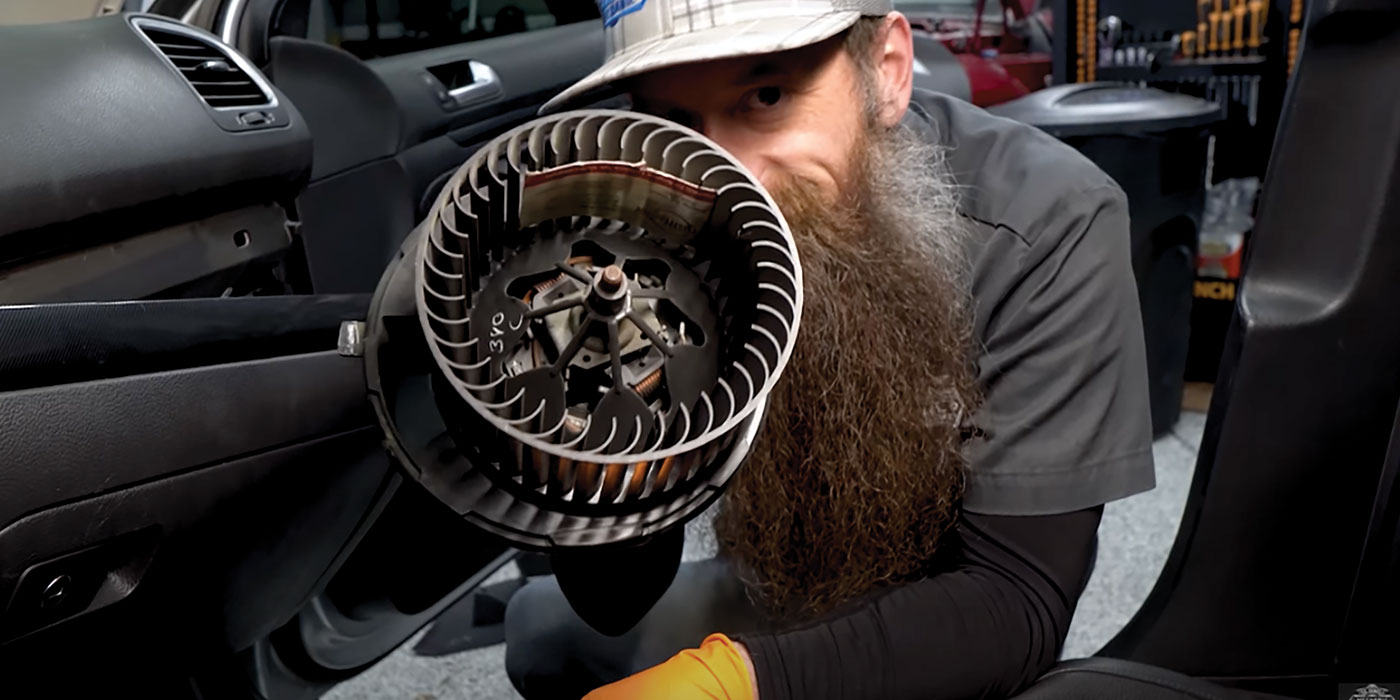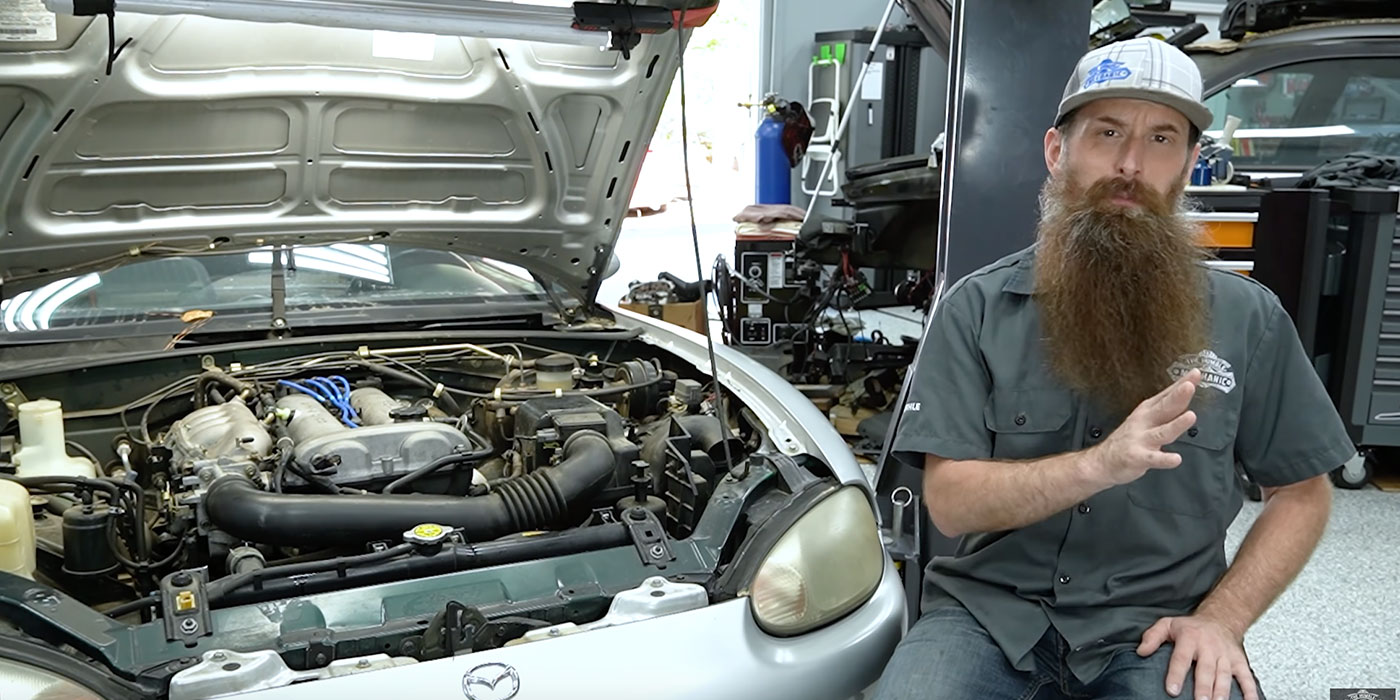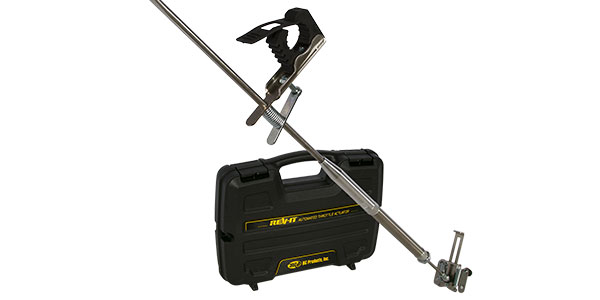A timing belt failure can be a serious problem, not only because it strands the motorist, but also because of the extensive engine damage it can cause. If the engine is an “interference” application, a timing belt failure may result in bent valves, damaged pistons and a very expensive repair bill for your customer.
For these reasons, belts should be periodically inspected and replaced before they fail. That’s where your preventive maintenance recommendations should take center stage.
Successful shops routinely recommend and sell necessary vehicle maintenance, like timing belt replacements. And what better way to develop a high-quality reputation than to recommend services that will prevent your customers from having trouble on the road, while, at the same time, increasing the longevity and reliability of their vehicles. All maintenance services are important, but few will have the consequences of a neglected timing belt.
 Do yourself and your customers a favor. If you’re not already actively selling preventive maintenance, start now. Record the mileage of every car that comes through the shop, and note which services need to be performed, or should have been performed in the recent past. Oftentimes, all it takes is a reminder that a particular service is due, and a little education on why it’s important to have the job done, and you’ll find yourself scheduling your customer for an appointment.
Do yourself and your customers a favor. If you’re not already actively selling preventive maintenance, start now. Record the mileage of every car that comes through the shop, and note which services need to be performed, or should have been performed in the recent past. Oftentimes, all it takes is a reminder that a particular service is due, and a little education on why it’s important to have the job done, and you’ll find yourself scheduling your customer for an appointment.
Unlike “repair” work, maintenance jobs allow you to get right to work. That’s not to say your diagnostic skills should be left in the toolbox. While under the hood, it’s important to be on the lookout for potential problems that can be addressed while the belt is being replaced. Keep in mind that the customer is having you perform a certain vehicle service to prevent problems, and expects you to anticipate future problems.
This process begins when the appointment is made. At the very least, you should get approval to replace the accessory drive belts. Most cars will still have the original belts, even with 90,000 miles on the odometer. It’s usually not difficult for the customer to understand why all the belts should be replaced.
Another item we always sell with a timing belt job is a thermostat. With the accessibility provided by having the timing belt removed, it’s foolish not replace this inexpensive part. The same thing applies to the water pump, except, at this point, you may be getting some resistance on the price. If the customer balks at the expense, explain that you may find indications of a leaking pump upon disassembly. I like to have the approval to change the pump, if needed, to prevent the time required to make the phone calls.
Digging In
In this article, we’ll take a look at timing belt replacement on a 1992 Maxima. The current Pathfinder, Quest and trucks require very similar procedures. The actual nuts and bolts of doing the job shouldn’t present any problems. But, like any V6, with the engine located sideways, space is tight.
Access the belt from the wheel well area, as well as from under the hood.
Disconnect the negative battery cable.
Remove the hoses and drive belts (Nissan uses drive belt adjusters).
Lubricate and free up these adjusters as the belts are removed; it’s time well spent.
Don’t overlook the adjuster and idler pulleys; give them a spin while listening for bad bearings.
With the right front wheel and splash pan removed, loosen the crankshaft pulley bolt. The pulley should come right off.
Keep track of the timing belt cover bolts as they are removed. You’ll notice that the upper and lower cover bolts are different, with one of the upper bolts being different yet. This bolt threads into one of the water pump bolts that has been drilled and threaded.
Note: If a water pump is replaced, be sure to have that bolt in the correct hole to prevent duplicate disassembly.
With the covers removed, reinstall the crankshaft bolt and turn the crankshaft clockwise until the #1 cylinder is at TDC. You’re there when the punch mark on the crankshaft pulley is in line with the slot on the oil pump; while the cam pulley marks are in line with the reference marks on the inner top cover.
Make note of how well the marks line up; it’s not unusual for these marks not to be dead on. As you’ll see when you install the new belt, these are only reference marks.
Loosen the lock nut on the timing belt tensioner and, using a 5 mm Allen wrench, slacken the belt and temporarily tighten the lock nut. Now the belt can be removed. This is the time to check that the tensioner pulley turns freely with no noise. It’s also an opportunity to check and repair leaking cam and crank seals, and to check for coolant leaks from the water pump and thermostat housings.
Reassembly will present no problems. OEM belts, as well as most quality aftermarket belts, will have alignment stripes to set the cam timing.
Line up the marks on the belt with the punch marks on the pulleys. (If you have a belt without the marks, confirm that the timing is correct with other reference marks). Make sure that the belt is taut on the non-tensioner side. There should be 40 teeth between the cam pulley marks, with 42 between the left-side cam and crank marks.
With the belt still taut, loosen the tensioner lock nut allowing the tensioner to work, tighten the lock nut and turn the engine over twice.
Ensure that the timing marks are lined up. Check for proper tension between the cam pulleys. You are looking for about a half-inch deflection with 20 lbs. of force. Your service information will include a more detailed version of tensioning the belt that involves rolling a 0.014″ feeler gauge between the tensioner pulley and the belt (We don’t use that method in our shop and have no problems
The balance of the job is reassembly; simply installing the parts that were removed. Torque the crank pulley bolt to 95 ft.-lbs., fill and bleed the cooling system, check the ignition timing and you’re all set.
Note: If you’re presented with a noise coming from the distributor on one of these engines, don’t jump to conclusions. This complaint seems to be more common on the Pathfinder than on the other models that use the VG30. A rattling or vibration noise coming from the distributor is actually a loose timing belt. The belt will be so loose that the camshaft will change direction as the valve springs push it in one direction and the belt pulls it the other way. It’s the normal lash in the distributor gear that causes the noise. You should be ready to handle this one.
Related Service Opportunities
As mentioned in the sidebar, Nissan has been moving away from timing belts. And, yes, we have lost some service work as a result. But don’t forget to sell accessory belt maintenance on these timing chain engines. Like a timing belt, a failed water pump or alternator drive belt will result in the customer being in just as much of a dilemma as he or she would encounter in the event of a timing belt failure. Engine damage may not be as likely, but we’ve all replaced engines damaged by extreme overheating.
Like a timing belt replacement job, drive belt replacement presents many of the same related service opportunities. You’re in a prime spot to inspect the water pump for leaks and bad bearings, as well as to check the idler and adjuster pulleys.
When it comes to crankshaft seals, the Nissan G16 engine will give you plenty of opportunities. This 1,600 cc engine is found in the popular Sentra series. Compared to doing a timing belt replacement, replacing this seal is relatively easy.
Remove the oil-soaked belts.
Working through the wheel well area, remove the crankshaft bolt and pulley.
Carefully pry out the seal and replace it.
Closely inspect the pulley hub for any damage caused by the old, hardened seal. A deeply grooved pulley should be replaced to ensure a good seal.
Reinstall the pulley, torque the crank bolt and install the belts. After completing this procedure, your customer will have a leak-free car and piece of mind.
When you thoroughly inspect your customers’ vehicles and make appropriate vehicle maintenance recommendations, the benefits are two-fold. You effectively restore those vehicles to peak operating condition, plus you solidify your customers’ trust in your shop. These are the types of customers who return for service the next time their vehicle is in need of repair. They also help to promote your shop through positive word-of-mouth recommendations.
There is no better way to build a reputation as a high-quality shop, than to service your customers’ vehicles before they break.
|
Timing Belt Safety Tips
When installing belts, only use the correct installation tool(s). The belt must be placed in position manually. In no circumstances may timing belts be forced, e.g. with rim levers, onto toothed pulleys or rolled over flanged pulleys. Such action would damage the tension member. Never allow caustic or corrosive liquids to come into contact with the belt drive, as they could damage the plastic parts. Keep the belt well away from oil mist, dripping oil and other chemicals. Always comply with the installation instructions of the vehicle manufacturer. Following a belt installation, fill out a Timing Belt Interval Replacement sticker and adhere it in the engine compartment where it easily can be seen. Regardless of which components are defective – whether tensioning pulley, idler pulley or guide pulley – all these components must be replaced. |







